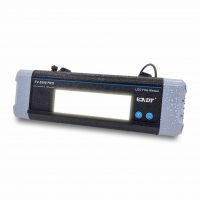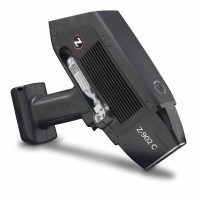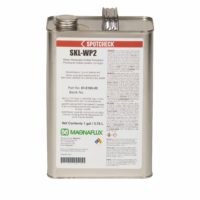
The JME portable X-Ray Betatron 7.5MeV is designed to produce high energy ionising radiation for industrial radiographic non-destructive testing. It can penetrate 30 centimeters of steel or 1 metre of concrete. Case study provided by JME Advanced Inspection Systems.
PROJECT OVERVIEW
It was identified that part of a heavy wall pipe, in relation to an offshore wellhead, failed/collapsed during a routine drilling operation. Additionally, a drilling tool had become lodged inside the tubing due to a breakage and is stuck in the well.
After initial evaluation, it was decided that the best ‘product’ solution for the project was through Radiography using the JME High Energy Portable Betatron system (PXB 7.5MeV). This equipment could be used to detect where the pipe had collapsed and confirm the area in which the tool was stuck so it could be removed and the pipes repaired.
REPAIR AND POST REPAIR INSPECTION
The project would include a complex well operation to expand the collapsed pipe and remove the tool that was lodged in the pipe. Once the tool had been removed, additional Radiography with the Betatron system would be required to ensure the repair was successful and operation of the pipelines could continue.
THE SOLUTION
 The JME Betatron system was used along with Film Radiography to monitor inside the pipe between the repair operations. Due to the expense associated with downtime on an offshore platform, the customer needed to verify that the operation proceeded and progressed as planned.
The JME Betatron system was used along with Film Radiography to monitor inside the pipe between the repair operations. Due to the expense associated with downtime on an offshore platform, the customer needed to verify that the operation proceeded and progressed as planned.
The plan of operation was to conduct a radiography shot with the Betatron, before, during and after the repair procedure was completed. This ensured that the full scope of the project could be completed as quickly and efficiently as possible with the minimum of disruption.
The inspection measure was simple, before the well could be put into operation, the criteria was to prove if there was a 2” solid steel bar inside the 7” casing. During well operation, radiography was conducted from different angles to ascertain the direction of the collapse in the 7” casing. A final radiograph was taken after well operation to prove that the 2” solid steel bar was removed.
CHALLENGES
The main challenge with this project was radiation protection for the operators, in what was a relatively small, yet open area with lots of machinery present. The requirement was to shield enough of the radiation and keep them at low enough levels to fulfill the requirements of ‘radiation protection’. The majority of exposures were done after the main day shift was over, this minimized the amount of people around the exclusion zone and in areas close by. All exposures performed with the Betatron system were done so the emission direction was pointing towards the sea and not in the direction of other rig modules.
The well consists of five casings, dimensions as follows:
- 32″ Pipe – 25.4mm thickness
- 20” Pipe – 16.1mm thickness
- 13 3/8” Pipe – 13.1mm thickness
- 10 ¾” Pipe – 13.8mm thickness
- 7” Pipe – 10.4mm thickness (production pipe)
The total thickness to be penetrated with the Betatron system was 1576mm, along with the potential of having accumulated water between each pipe wall. The required exposure time was between 25 to 30 minutes with 7.5MeV to achieve the required film sensitivity on AFGA D7 film. In relation to the inspection criteria, there were no challenges associated with the use of the Betatron system. The machine was very easy to set up and operate, especially with its intuitive control panel to set all of the radiograph parameters.
RESULT OF INSPECTION
Before the well operation was conducted, the 2″ solid steel bar was located and proven to be within the 7″ pipe.
During the well operation, the direction of the collapsed 7″ pipe was proved, making the repair operation simpler.
The customer found the radiographs very helpful during the well operation and are hoping that the Betatron system will be available for future complex well operations.
Contact us for more information on the JME PXB:7.5 Betatron.





